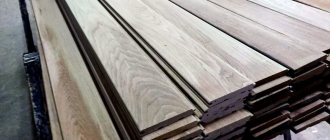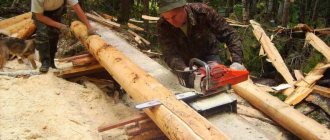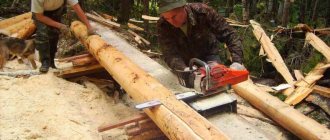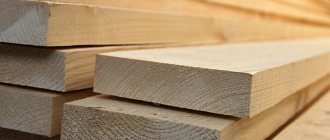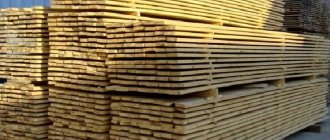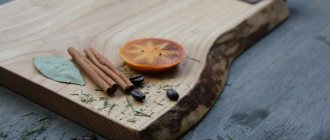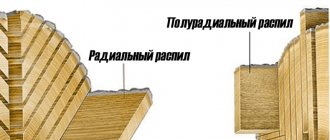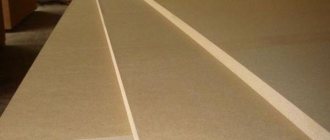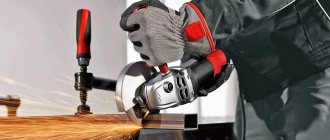"Larix" offers cutting services for slats, bars, boards and other wooden molded products according to customer sizes. We produce high-quality lumber, so we cope with the task of sawing quickly and at the highest level. This service can be ordered both for materials purchased on this site and for customer raw materials.
Short order completion times, cutting accuracy and affordable prices are the main advantages of services from our company.
We have been working in the woodworking industry for more than 15 years. During this time, we managed to assemble a team of real professionals, accumulate knowledge and gain enormous practical experience. Therefore, we can confidently say: the work of Larix specialists meets the expectations of even demanding customers. This also applies to cutting slats, boards and bars.
Selection of raw materials
Round timber logging
Not only trunks, but also large branches are processed. Roundwood logs are sorted by size and presence of bark. The trunks that have not been sorted are subsequently used for rough work (making scaffolding, etc.). When accepting raw materials from the supplier, not only the cubic capacity is checked, but also the presence of damage, rot, knots - such materials do not meet the technical specifications. Defects in wood reduce the percentage of finished products at the output, and knots can damage equipment.
Before sawing, trunks are often debarked (bark is removed using a special machine) - this process is optional, but is considered economical:
- due to the absence of stuck pebbles and sand in the bark, the saw is protected from premature wear;
- the quality of the chip material improves;
- some enterprises do not accept slabs from unbarked logs for processing;
- the error in results when sorting wood using electronics is reduced.
Scheme of trunk debarking
Types of wood cutting
Types of wood cutting
First of all, you need to decide on the type of cut - there are several of them. Tangential - the cut goes tangentially to the growth rings, the surface is obtained with patterns in the form of rings and arches. Boards obtained in this way are cheaper, but have high percentages of shrinkage and swelling.
Radial - a cut along the radius, perpendicular to the growth rings, the pattern is uniform, the yield of the board is small, but it is of higher quality and greater strength.
Rustic – carried out at any angle, defects, knots, sapwood, etc. are visible.
Output of edged lumber per 1m³
The ends of lumber and rough blanks must be sawn at right angles to the longitudinal axis. Wane beams (with a partial absence of a cut in the edge) with a cross-section of 120×120 mm or more must have a cut width at the thin end of at least one third of the side of the beam. They are made in various assortments, sizes and quality.
Interesting: What needs to be done for divorce By sawing logs crosswise, lumber is obtained that differs sharply from each other in quality and appearance. Those taken from the middle of the trunk are called core. The wood of these boards is the most durable and stable. “Lateral” are called boards obtained from the extreme parts of the trunk. They have a beautiful texture and are used for finishing work. They cannot be used in load-bearing structures, because boards are easily deformed.
[my_custom_ad_shortcode1]
Cutting methods
For each specific case, a cutting method is selected.
Tumbling is the most economical, almost no waste, high percentage of finished timber. The output is unedged boards and two slabs.
With lumber - first you get a double-edged beam, unedged boards, and two slabs. Then the timber is sawn perpendicular to the cut into edged boards, along the edges two unedged boards and two slabs are obtained.
Methods for cutting wood
Sector - first, the log is sawn into 4–8 sectors, and then each of them into radial or tangential materials. Sometimes several unedged boards are cut in the center.
Break-up-segment - with this type of cutting, two or more unedged boards are cut in the center of the trunk, and edged one-sided boards are sawed from segments on the sides.
Beam-segment - similar to split-segment, only in the middle of the log a two-edged beam is cut, which is then sawn into edged boards. The yield of lumber is high.
Circular - after sawing off one or more unedged boards, the log is rotated 900 and the next boards are sawed off. This method is used when a large log is affected by heart rot in the center. With its help, healthy wood is separated from low-quality wood.
Aggregate - using milling tools and circular saws, along with high-quality lumber, the output is technological chips (instead of slabs and slats). Such complex forest processing allows for rational use of raw materials and labor costs. This results in waste-free production of finished lumber.
Basic information
The volume of finished lumber when sawing is, first of all, determined depending on the technological waste. The latter also depend on many factors. It is very important to take into account the quality of the original lumber, i.e.
when sawing logs, the following boards are obtained:
Cutting logs into boards: 1 - core; 2 - central; 3 - lateral; 4 - slabs.
- Core ones. They are cut from the very center of the trunk, and due to the fact that it is the core that is characterized by increased strength and resistance to all influences, these boards are the most valuable.
- Central. They can be radial or tangential, depending on the cutting style. Both options have their pros and cons, which is why the demand for them varies slightly. It is these boards that are used in almost every line and in furniture manufacturing factories.
- Lateral. For craftsmen, such boards are more valuable, but they also cost more. The area of the side boards is located between the central part and the slab. The main characteristics are less knotty, easy to plan, cleaner surface. But they are obtained this way exclusively from the butt part of the tree.
A lot depends on the degree of processing of the lumber, on the quality of the equipment and its technical condition; the qualifications of the craftsmen are also not the least important, and at the same time a number of smaller factors. Losses during sawing lumber are divided into 2 types - returnable and irrecoverable, and all over the world craftsmen try to minimize the latter in order to put everything into action down to the smallest detail.
Return losses include slabs, shavings, boards of incorrect length and width, sawdust, and lump waste. Irreversible - bark that cannot be processed and is almost impossible to sell, i.e. the only use is a stove or, in some cases, pharmaceuticals (many medicines are made from the bark of many trees, but how the bark is obtained does not matter).
[my_custom_ad_shortcode2]
Necessary tool
Necessary tools for cutting
The choice of tools depends on the quantity of planned finished products, their quality and product sizes. Most often, cutting is performed with a circular saw. At certain stages of production, the use of special machines is required.
The circular saw makes precise cuts in any direction, copes well with any size of log, and is suitable for professional and home use.
A chainsaw is used for home use when it is necessary to prepare a small amount of lumber. It's easier to do more difficult jobs with a chainsaw than to buy expensive equipment. All you need for it is a special attachment, a barrel fastener and cutting guides.
Machines for removing bark. They are quite expensive, but with regular use in an enterprise where large volumes of work are performed, they quickly pay for themselves. They are not required to be used, but are desirable because they can provide a number of economic advantages and conveniences in the production process.
You will also need:
- Disc machine – for obtaining unedged output materials from the forest.
- The band sawmill produces high-quality lumber and a low percentage of waste.
- Frame sawmill does not require a foundation and can be installed directly in logging sites.
- Universal machines are capable of producing high-quality material even from low-grade wood.
At enterprises with mass production, to obtain ultra-precise and high-quality products, entire complexes of modern equipment are installed, and sawing of wood is carried out of any complexity.
Additional aspects
Sawdust is used to make chipboard. For a long time, masters could not determine what to do with waste, but since the 18th century, targeted experiments have been carried out, bearing fruit:
- Boards and timber of non-standard length are ideal for the manufacture of finishing materials and furniture panels. In fact, the restriction by GOSTs gave rise to a new direction of engineering and design thought, which was picked up all over the world due to its accessibility. Starting from the middle of the 20th century, widespread use began with the accelerated mutual exchange of technologies, due to which this type of waste became very conventional; a number of manufacturers even highlight them in a separate column as a full-fledged material when creating price lists.
- Sawdust. Chipboard material is known all over the world, from which 90% of the furniture on the planet is made. Chipboard is made from sawdust mixed with a number of resins and adhesives. With some investment, these losses also became returnable, although they were the ones that seemed the most terrible. They did the same with the chips, only the processing method was completely different, which is why the material acquired different properties (it is used much less frequently).
There are also statistics that give average figures for conifers:
| Lumber | European part of the Russian Federation, % | Asian part of the Russian Federation, % |
| Board from 1 m and above | ||
| Short board | ||
| Lagging | ||
| Technical wood chips | ||
| Sawdust | ||
| Waste | ||
| Drying and spraying |
Table of wood types.
For such a yield of lumber, modern high-precision equipment is not required, just as circular saws are not needed. The indicators are given exclusively for chain obsolete units, which were used in the USSR and are quite popular in the 21st century. Modern technology, in turn, can increase efficiency from 54.7 to 60-61%. If the equipment is severely worn out, then the efficiency will drop to 10%, which entails serious losses of wood, including financial ones.
Some masters try to prove that it is possible to achieve efficiency of up to 80%, but even with the most modern programs such a construction is technically impossible. To increase the yield of lumber when sawing, you need to regularly check and modify the equipment, and, if necessary, update it.
Another significant factor is the type of wood. The higher the grade, the higher the % yield. For example, it is always more convenient to saw maple than its peer pine.
In pine, the efficiency will drop to 35-45%, because the trunk is very narrow. That is why logging organizations try to work exclusively with old trees, the sawing of which will bring maximum benefit.
[my_custom_ad_shortcode3]
Sawing technological map
Sawing technology
To calculate the optimal percentage of obtaining finished lumber from logs, a forest sawing map is drawn up. These calculations can be done independently or using a special computer program. Such information can also be obtained in a regular reference book, which contains information on sawmilling operations.
The cutting map allows you to determine how many finished products will be produced and what percentage of waste will be recycled. From these data, you can determine the final cost of the product. The result may largely depend on the type of forest. There are some measures to increase the percentage of lumber yield.
The percentage of lumber at the output is ready-to-use, useful wood. Waste is the raw material for producing MDF, chipboard, and fiberboard. These volumes will depend on the diameter of the tree, the types of solid wood products being manufactured, and the sawing option.
Percentage of round timber
Accurate calculation of each cubic meter of wood - an expensive natural raw material - is important in every woodworking enterprise. Cubic meters of roundwood are calculated in several ways.
Wood table
By volume of transport. Each type of transport has its own forest cubic capacity calculated and determined. For example, a carriage holds 70.5 cubic meters of round wood. Then there will be 22.5 cubic meters of it in three cars. This method of calculation speeds up the acceptance of raw materials, this is especially important when there is a large amount of incoming cargo. But there is a large error in the calculation results in this way.
Calculation based on the volume of one trunk. If the entire logging consists of timber of the same size, then by counting the volume of one, you can count them all and multiply by the cubic capacity of one. This method is more accurate, but requires a lot of time and the involvement of more workers to accept the cargo.
Automated systems with measuring frames. These measurements provide higher percentages of accuracy than those taken by humans. When logs pass through the measuring frame, all thickening and curvature of the trunk and even knots are taken into account. In this case, you can immediately sort the trunks.
A method of calculation by multiplying the volume by a coefficient. The height, width, and length of the stack are measured and multiplied by a coefficient. This calculation is fast, but with a low percentage of accuracy. It is used when it is necessary to urgently determine the number of cubic meters.
Finished product yield ratio
Dependence of the final yield percentage on sawing technology
To increase the yield of finished lumber, it is necessary to optimize the sawing process itself. This is especially true when working with workpieces that have curvature, damage or other flaws:
Wood defects
- First, you need to select and put into production only high-quality wood.
- Then select trunks with damage at the ends (rot, cracks) and trim these places.
- If there is a section of trunk with a rotten core, it must be removed and the remaining wood cut into lumber. They will be shorter, but of better quality.
- The circular cutting method is also suitable for obtaining high-quality boards.
- The yield percentage is higher when sawing timber with a larger diameter.
The yield also depends on the quality of the log, the type of wood, and the equipment used. New high-quality, well-tuned equipment allows you to process trunks with almost no losses.
The efficiency of timber cutting can be increased if special measures are taken in advance. To do this, you need to make accurate calculations using digital programs. If you do this manually, the percentage of output defects will be higher. It should be taken into account in advance that coniferous forest species produce a higher percentage of lumber output. Because their trunks are smooth, large, less susceptible to rotting and therefore almost free of defects. A large volume of deciduous trees is often discarded.
For rational use of wood, it is better to take short logs. But in domestic production, trunks with a length of 4 m or more are usually taken for sawing. Due to their curvature, the output results in a large percentage of rejects.
Video on the topic
And now I’ll answer why a high yield is not always good, but everything is simple at very high rates, the amount of boards with wane increases.
The result is low-grade lumber and its total cost from a log at a certain point becomes lower than the cost of high-quality materials. And selling low-quality material can be more difficult.
Good luck and see you again, Andrey Noak was with you.
When creating a business plan and its subsequent correction, wood processing enterprises always calculate the norms for the yield of lumber when sawing.
When receiving logs, wood processing enterprises always calculate the rate of lumber yield when sawing.
Each country has its own standards, but they are given extremely vaguely, because more accurate characteristics can only be obtained on an individual basis.
[my_custom_ad_shortcode1]
